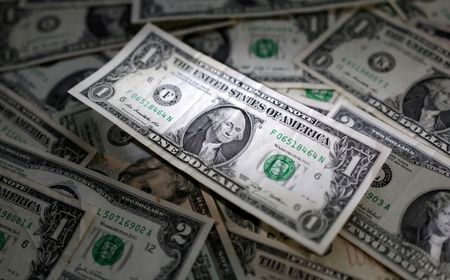Despite the inverted yield curve, which traditionally predicts an economic downturn, the US economy has remained strong due to factors such as fiscal and monetary stimulus efforts and a lag time before interest rate hikes impact the economy, but some bond market experts believe the yield curve will eventually prove to be a good indicator for the market and the economy.
The South African rand weakened in response to higher U.S. Treasury yields and concerns over further U.S. interest rate hikes, as stated by Federal Reserve Chair Jerome Powell, which typically has a negative impact on risk assets.
The US Dollar is facing profit-taking and risk as traders digest the Jackson Hole speech and push back expectations for rate cuts, while upcoming macroeconomic data points will be closely watched for any signs of economic deterioration.
The US dollar was cautious as traders awaited economic data, while the yen struggled near intervention levels as the dollar remained strong.
The Canadian dollar weakened against the US dollar after data revealed that the country's economy unexpectedly contracted in the second quarter, reducing the likelihood of an interest rate hike from the Bank of Canada.
The US dollar weakened against major counterparts due to disappointing economic data, leading to a rally in gold prices and a less dovish Federal Reserve outlook, while the Australian and New Zealand Dollars performed well due to gains in Wall Street; crude oil prices also rallied despite deteriorating economic conditions in China.
The dollar remained stable as investors weigh US jobs data that showed signs of cooling and the likelihood of the Federal Reserve ending its monetary tightening cycle.
The U.S. dollar drifted in cautious trading as investors considered U.S. jobs data that indicated a potential slowdown, suggesting that the Federal Reserve may be nearing the end of its monetary tightening cycle.
The dollar rose as investors sought the safe-haven currency amidst concerns over global growth, particularly in China, while the Australian dollar slumped after the Reserve Bank of Australia maintained interest rates.
Bank of America warns that the US economy still faces the risk of a "hard landing" due to rising oil prices, a strong dollar, and potential interest rate hikes by the Federal Reserve, contrasting with the optimistic outlook of other Wall Street banks.
Gold gained as the dollar weakened against the yuan due to positive China economic data, although the possibility of further U.S. interest rate hikes kept investors cautious.
A stronger US dollar has a significant negative impact on emerging market economies compared to smaller advanced economies, as it decreases economic output and trade volume, worsens credit availability and capital inflows, tightens monetary policy, and leads to stock-market declines. Emerging market economies with anchored inflation expectations or flexible exchange rate regimes fare better, and global current account balances decline with a stronger dollar, reflecting a contraction in global trade. Measures such as global safety nets and macroprudential policies can help mitigate these spillover effects.
